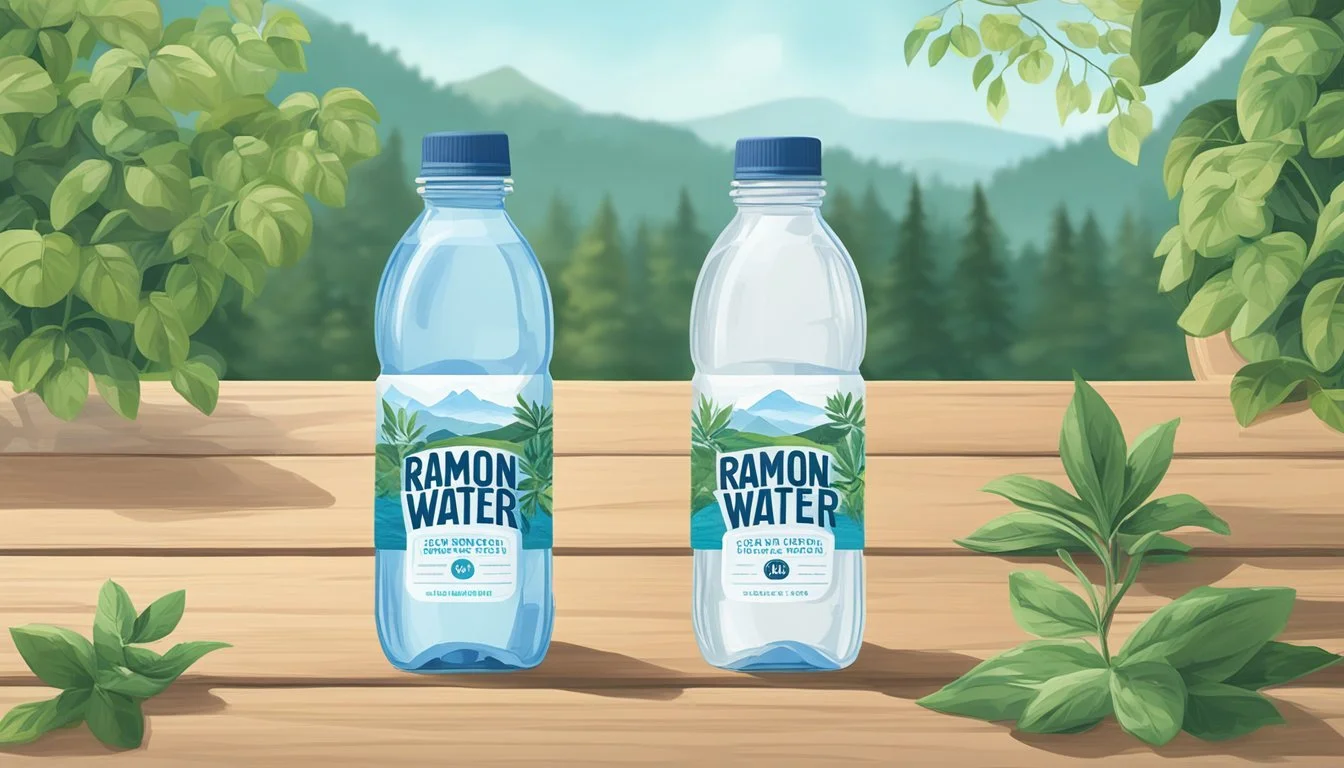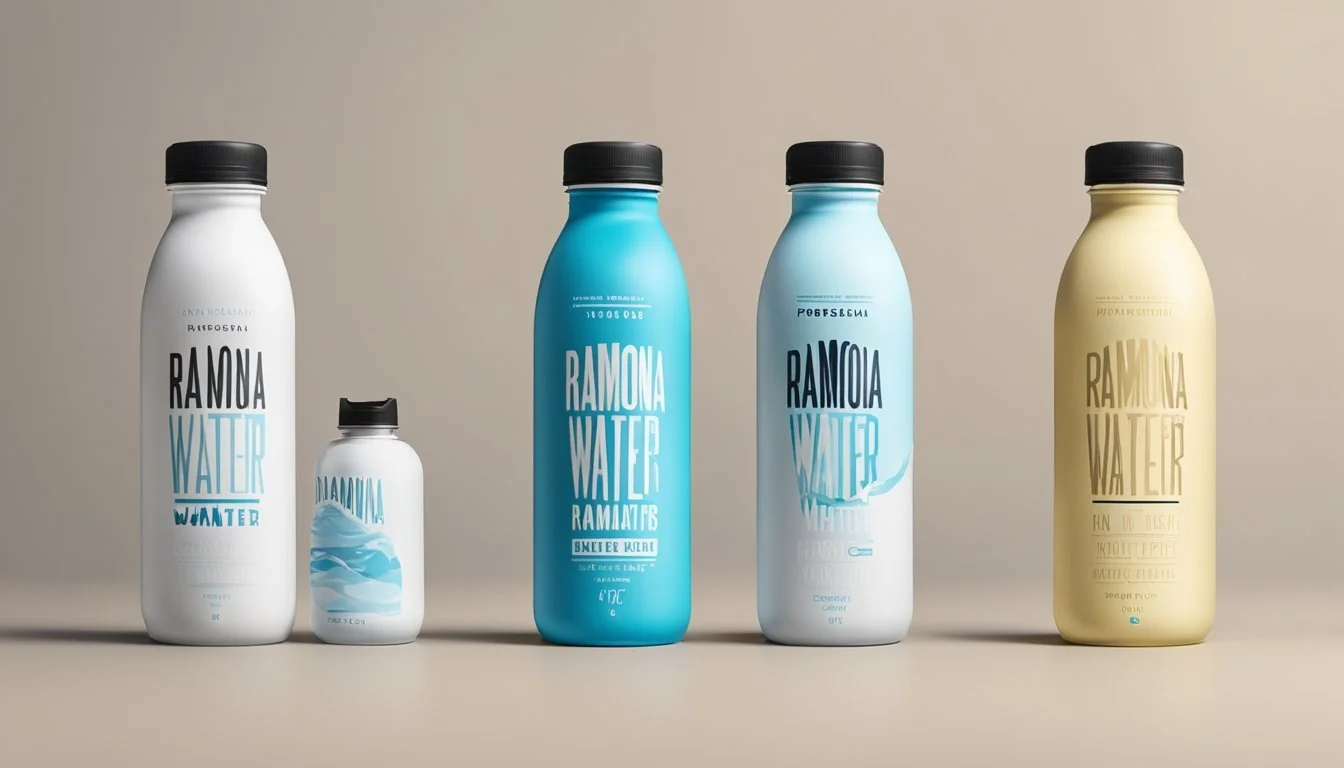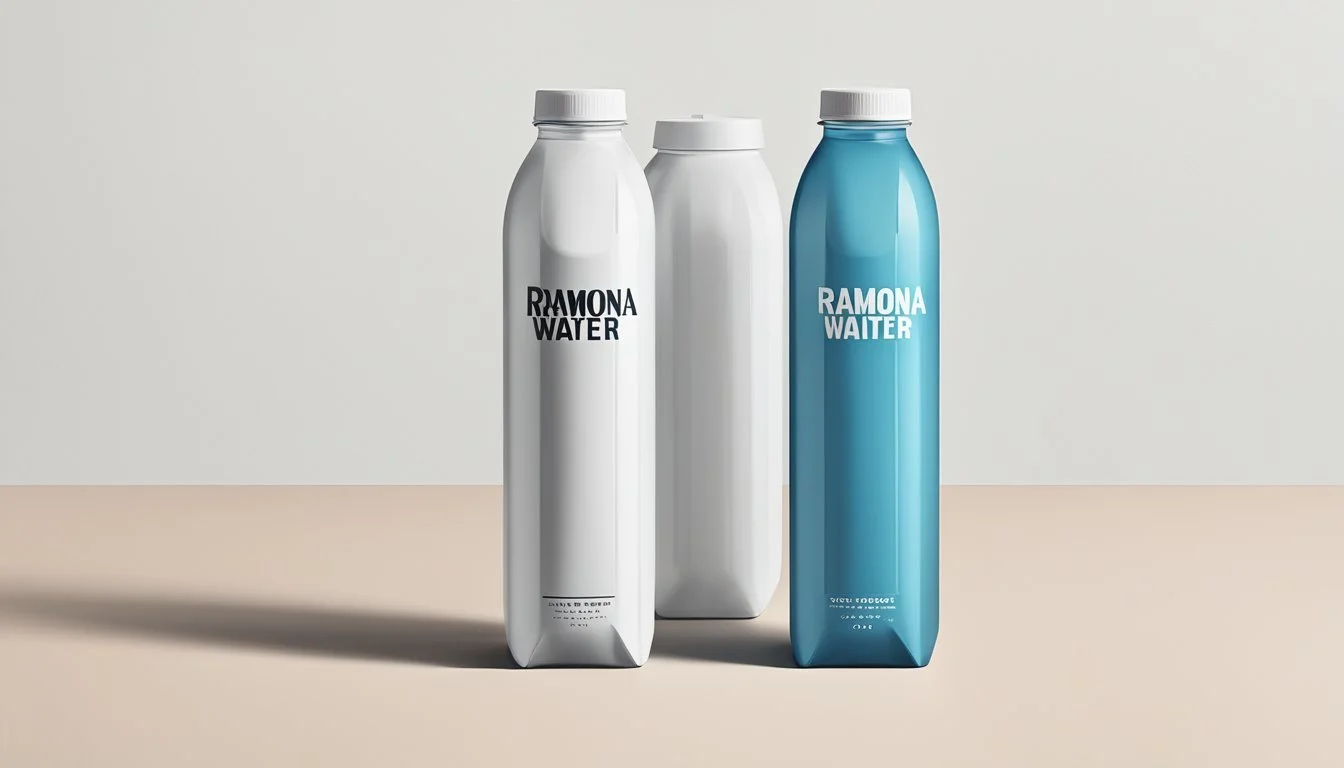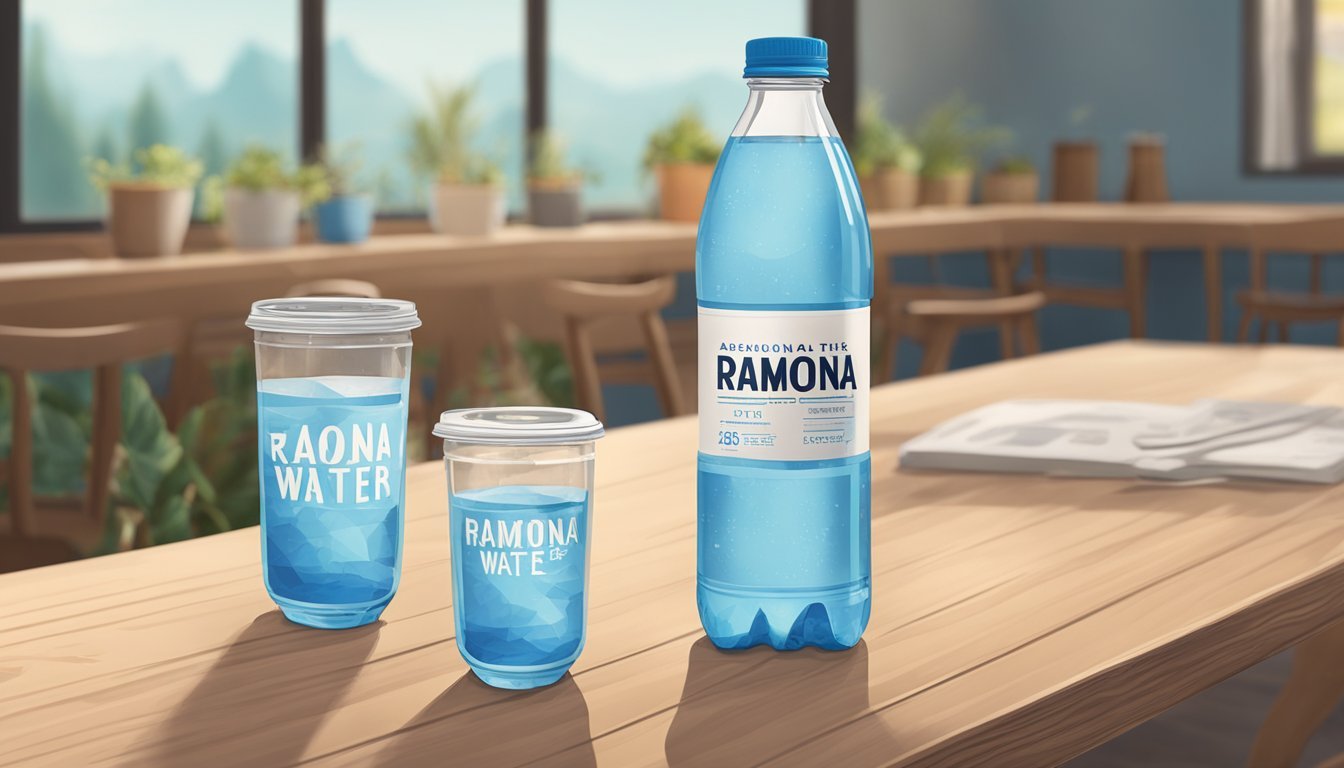Boxed Water vs. Ramona
Comparing Quality and Sustainability
Choosing the right bottled water can significantly impact your daily hydration habits. When comparing Boxed Water and Ramona, Boxed Water stands out for its commitment to sustainability and refreshing taste. According to reviews, Boxed Water not only provides a crisp and neutral flavor but also comes in eco-friendly packaging made primarily of sustainable paper.
Ramona, on the other hand, offers a reliable and pure drinking experience without the taste of plastic. This makes it a preferable choice for those who are sensitive to any aftertaste in their water. Both options have their unique advantages, but Boxed Water's environmentally conscious approach gives it an edge for many consumers.
Before making a decision, it's crucial to consider what's most important to you—whether it's the taste, the packaging, or the overall environmental impact. This comparison aims to help you make an informed choice between these two popular bottled water brands.
Understanding Bottled Water
Various types of bottled water are available in today's market, each with unique qualities and packaging. Recently, boxed water has emerged as a sustainable alternative to traditional plastic bottles.
Types of Bottled Water
There are several types of bottled water, including spring water, purified water, and mineral water. Spring water comes from underground sources and is collected at the source or through a borehole. It usually retains natural minerals.
Purified water is treated through processes like reverse osmosis and distillation to remove impurities. This makes it very pure, often rivaling the quality of tap water.
Mineral water contains dissolved minerals like calcium and magnesium. It is typically sourced from mineral springs.
Water is also available in different packaging formats: plastic bottles, aluminum cans, and glass bottles. Plastic bottles are lightweight and widely used but face scrutiny for environmental impact. Aluminum cans and glass bottles are more recyclable but are heavier and more costly to transport.
The Rise of Boxed Water
Boxed water has been presented as a more sustainable option compared to traditional plastic bottles. Brands like Boxed Water Is Better and JUST Water use paper-based packaging, which is more environmentally friendly. These boxes are often made of 76 percent paper and contain a small amount of plastic.
The appeal of boxed water lies in its reduced environmental footprint. Paper packaging can be more efficiently recycled, and less plastic is used overall. Boxed Water, for example, employs a purification process using ultraviolet, carbon, and reverse-osmosis filtration.
Consumers have also noted the aesthetic appeal of boxed water. The design often resembles a milk carton, which adds a unique and fun element to its presentation. However, the availability of carton recycling and the quality of local tap water can affect its convenience significantly.
Environmental Considerations
Both Boxed Water and Ramona offer unique packaging solutions that aim to reduce environmental impact. Analyzing their approaches involves looking into aspects such as plastic usage, sustainability, and renewable packaging alternatives.
Plastic Bottles and the Environment
Plastic bottles significantly contribute to environmental pollution. Single-use plastic bottles are made from petroleum, and their production consumes vast amounts of oil. Furthermore, plastic containers take hundreds of years to decompose, leading to accumulation in landfills and oceans.
Microplastics from discarded bottles also contaminate water sources and marine life. Switching to alternatives that use less or no plastic can help mitigate these negative impacts and support a cleaner environment.
Sustainability of Boxed Water
Boxed Water seeks to offer a sustainable alternative to traditional bottled water through its innovative packaging. The cartons are primarily made of paper from sustainably managed forests, ensuring that the raw materials are renewable.
Furthermore, Boxed Water packaging consists of:
74% paper
1% aluminum
25% plastic film
This composition reduces the reliance on non-renewable plastics. Additionally, the company ensures that the cartons are recyclable, helping to lower the environmental footprint. Considering the full product lifecycle, Boxed Water generally presents a lower carbon footprint compared to conventional plastic bottles.
Renewable Packaging Alternatives
Exploring renewable packaging alternatives is critical for reducing environmental damage. Boxed Water promotes the use of cartons made from renewable trees in its packaging, delivering a viable alternative to plastic.
In contrast, plastic bottles heavily rely on fossil fuels. Alternative materials like plant-based plastics or glass bottles provide more eco-friendly solutions. Carton recycling facilities further improve the sustainability of Boxed Water's packaging, making it easier for consumers to participate in responsible disposal practices.
By opting for materials sourced from sustainable forests and focusing on recyclable content, renewable packaging alternatives like Boxed Water can significantly contribute to decreasing the adverse effects associated with single-use plastic bottles.
Health and Safety
When considering the health and safety of Boxed Water and Ramona, two main aspects come to light: the potential contaminants and the health impact of their packaging materials.
Contaminants and Purity
Both Boxed Water and Ramona prioritize purity in their products. Boxed Water undergoes purification using ultraviolet, carbon, and reverse-osmosis filtration methods. This multi-step process helps eliminate contaminants like fluoride and chlorine, ensuring clean and safe drinking water.
Ramona, on the other hand, uses a similar high-standard purification process to remove impurities. Both brands strive to provide water that is free from common tap water contaminants, making it a safe choice for consumers.
Health Impact of Packaging Materials
The packaging materials for both Boxed Water and Ramona have distinct health implications. Boxed Water packages are primarily made from sustainable paper combined with plant-based plastics and a small amount of aluminum. These materials are chosen to be BPA-free, reducing the risk of harmful chemical exposure.
Conversely, Ramona typically uses traditional plastic bottles. While many are also labeled as BPA-free, plastic packaging can still raise concerns about chemical leaching, particularly under high temperatures. The potential health impacts of plastics make Boxed Water's choice of alternative materials noteworthy. Boxed Water's commitment to eco-friendly and safer packaging offers an additional layer of health benefits.
Consumer Experience
Consumers prioritize taste and convenience when choosing between Boxed Water and Ramona. Each water brand offers a unique experience that varies in quality and practical use for those on the go.
Taste and Water Quality
Boxed Water has gained popularity due to its crisp and refreshing taste. Reviews often highlight its neutrality with a slight edge over other brands like Flow. Consumers appreciate that it lacks the plastic taste commonly found in bottled water. This makes it a preferred choice for those seeking purity.
On the other hand, Ramona offers a unique flavor profile that some consumers find more appetizing. Unlike Boxed Water, which focuses on a neutral taste, Ramona emphasizes a distinct mineral content. This gives it a recognizable taste that many find appealing.
Convenience and On-the-Go Use
Boxed Water is packaged in cartons that resemble milk boxes, a design that appeals to eco-conscious consumers. These cartons are easy to carry and fit well in reusable water bottles, making them suitable for travel and daily commutes. Consumers appreciate the convenience of being able to recycle the packaging easily.
Ramona, however, focuses on the traditional bottled water format that many consumers are accustomed to. This familiarity can be advantageous for those who prefer using disposable bottles. Though not as eco-friendly, Ramona’s bottles are designed for durability and ease of use, ideal for quick hydration needs.
Both brands signal a commitment to sustainability, yet Boxed Water gains an edge with its minimal plastic use and plant-based packaging. Consumers looking for a significant change from plastic bottles might lean towards Boxed Water for its innovative packaging and recycling benefits. Ramona’s strength lies in its reliability and traditional appeal in the convenience market.
Brand Analysis
Boxed Water Is Better and Ramona are two distinct brands that offer unique features in their bottled water products. This section will explore the specifics of each brand.
Boxed Water Is Better Brand Profile
Boxed Water Is Better made a significant impact in the market by pioneering the use of boxed water cartons. The packaging is made of 74% paper, 25% plastic, and 1% aluminum. This combination ensures the carton is waterproof and fully sealed.
Notably, the plastic used is often plant-based, which aligns with their sustainable goals. The brand markets itself heavily on its eco-friendly approach and aims to reduce the environmental impact compared to traditional plastic bottles.
Boxed Water Is Better is BPA-free and provides a clean, neutral taste without the potential chemical leaching associated with some plastics. Their cartons are portable, stackable, and easy to recycle, making them a convenient choice for environmentally conscious consumers.
Ramona Brand Insights
Ramona is a lesser-known brand compared to others like Dasani, Fiji, and Smartwater. It still competes on quality and sustainability. Known for clear, crisp water, Ramona focuses on delivering pure and refreshing hydration with minimal environmental impact.
Ramona offers a contemporary design and branding, catering to a niche market that values minimalism and sophistication alongside sustainability. The brand emphasizes the purity of its water, aiming to attract health-conscious consumers who prioritize clean drinking water.
Unlike Boxed Water, Ramona's bottle composition and exact sustainability practices are less prominently discussed. They maintain a strong commitment to environmentally friendly practices, ensuring their product appeals to eco-minded customers. Their competitive pricing and focus on high-quality water differentiate them in a crowded market.
Comparative Analysis
In this section, both Boxed Water and Ramona will be evaluated on their packaging materials and brand positioning efforts to determine which offers a better product.
Packaging and Material Science
Boxed Water stands out with its 92% plant-based packaging, promoting an eco-friendly image. The use of renewable materials significantly reduces its carbon footprint, making it a more sustainable choice compared to traditional plastic bottles. Boxed Water's packaging also helps in minimizing smog emissions and fossil fuel use.
Ramona, on the other hand, primarily uses recyclable plastic bottles. While these are recyclable, they still rely heavily on fossil fuels and contribute more to global warming. Hence, in terms of sustainability and environmental impact, Boxed Water leads due to its innovative use of renewable resources and reduced environmental damage.
Brand Positioning and Marketing
Boxed Water markets itself as a sustainable alternative in the bottled water industry, targeting environmentally conscious consumers. The brand emphasizes eco-friendly practices and transparent communication about its environmental benefits. This positioning helps Boxed Water to build a loyal customer base who are concerned about their ecological footprint.
Ramona's marketing focuses on premium quality and taste profile, appealing to consumers looking for superior flavor in bottled water. While it highlights the purity and natural sources of its water, it does not emphasize sustainability as much as Boxed Water. Consequently, Boxed Water captures the market segment that prioritizes environmental impact, whereas Ramona appeals to those more concerned with taste and premium quality.
Looking Forward
Future advancements in water packaging aim to enhance sustainability and promote wellness. Companies are investing in innovations to address global environmental concerns and provide better water sources.
The Future of Sustainable Water Consumption
Sustainable water consumption is becoming crucial in combating climate change. Boxed Water and other similar companies focus on renewable resources, minimizing plastic use, and providing eco-friendly alternatives.
Alaska Airlines has partnered with Boxed Water to reduce single-use plastics on flights, showcasing a commitment to environmental practices.
Such collaborations have a significant global impact. Sustainable packaging not only reduces waste but also encourages other industries to adopt similar practices for a more sustainable future.
Innovations in the Industry
Innovations in the water packaging industry are driving significant changes. New materials like plant-based plastics and advanced recycling methods are being explored.
These efforts aim to enhance sustainability while ensuring water quality. Companies are investing in technology to track water sources and maintain purity.
Boxed Water continues to lead in this area with its paper-based packaging. These innovations symbolize a broader trend towards eco-friendly solutions.
Adopting these advancements helps address global environmental concerns and promotes overall wellness. This push towards innovation reflects a significant shift in how the industry approaches sustainability.
Conclusion
When comparing Boxed Water and Ramona, several factors come into play.
Boxed Water boasts eco-friendly packaging, using a mix of sustainable paper, aluminum, and plastic. This change from traditional plastic bottles addresses environmental concerns.
In contrast, Ramona offers water in stainless steel bottles, which can be reused multiple times, further reducing environmental impact over time.
Both brands offer crisp and clean water sourced from reputable regions. Boxed Water is especially noted for its refreshing and neutral taste.
Personal preferences can influence the choice between these two. Some may prefer Boxed Water for its convenience and unique carton design. Others might lean towards Ramona for the durable and reusable bottle.
Factor Boxed Water Ramona Packaging Sustainable paper, aluminum, plastic Stainless steel Environmental Single-use but recyclable Reusable Taste Neutral, crisp, refreshing Varies, often crisp Water Source Clean, reputable sources Clean, reputable sources Personal Convenient, unique design Durable, long-term use
The bottom line for many comes down to a balance of environmental impact and personal convenience.









